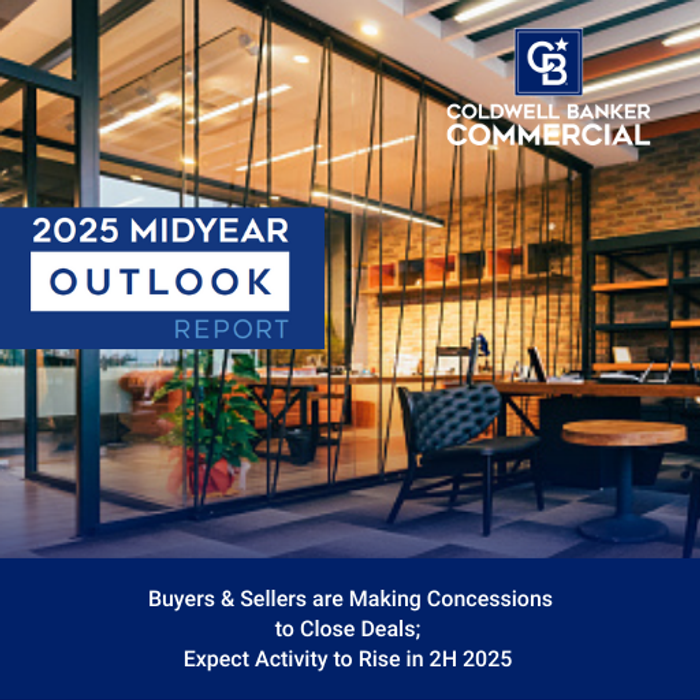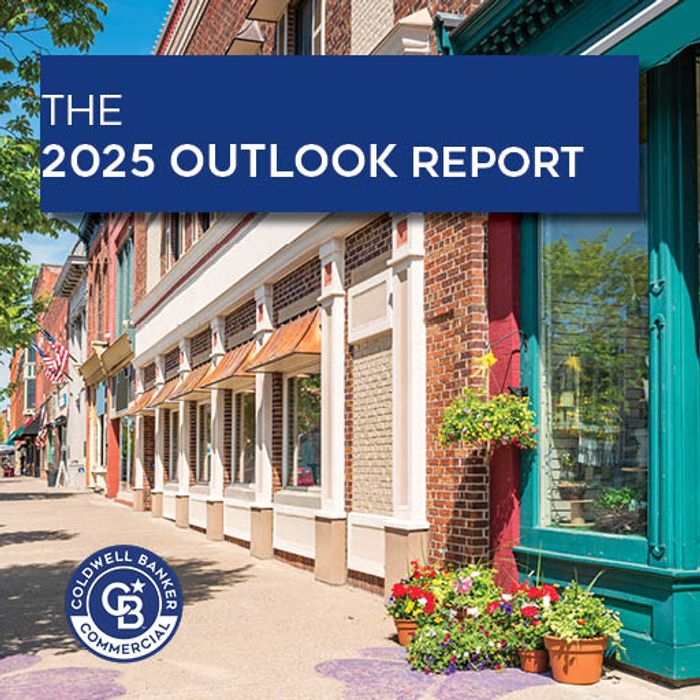Viewpoints
Industry insights, market outlook reports and commercial real estate
news, and trends from the Coldwell
Banker Commercial brand.
Market Tales: Atlanta, GA
In this episode of Market Tales, Amit Grover shares his journey from IT to commercial real estate, highlighting his specialization in the Atlanta market, particularly in retail and medical offices. He discusses the importance of data-driven strategies in winning business and the future trends in commercial real estate, emphasizing the need for value-add approaches. Amit also introduces innovative tools and systems he is developing to enhance efficiency and effectiveness in the industry.
Latest Viewpoints
See all Articles >
Buyers & Sellers are Making Concessions to Close Deals; Expect Activity to Rise in 2H 2025
Commercial real estate activity is rebounding in 2025 as buyers and sellers align on pricing. Learn how shifting expectations, creative deal-making, and strong retail and industrial sectors are driving a 14% YoY increase in U.S. CRE volume.
Read More >>
From Underdog to Outperformer: CRE’s Midyear Power Play
As of mid-2025, commercial real estate is outperforming residential housing in total returns, driven by resilient income and evolving asset strategies. Principal Asset Management’s latest report highlights CRE’s rare divergence from housing trends and forecasts a strong decade ahead for investors.
Read More >>
The Leadership Blueprint: Trust the Process with Alex Vidal
In this episode, Josh Best interviews Alex Vidal, the president of ERA Real Estate, discussing his extensive journey in the real estate industry, leadership philosophies, and the importance of coaching and mentorship. Alex shares insights from his early days as a secretary to becoming a leader in the real estate sector, emphasizing the significance of leading by example and the role of continuous learning in achieving success. In this conversation, Alex Vidal shares insights on leadership, focusing on key goals for growth, building a positive organizational culture, and identifying talent beyond traditional resumes. He emphasizes the importance of accountability, personal growth outside the real estate industry, and the significance of morning routines for success. Alex also discusses the balance between giving freedom to team members and holding them accountable, while highlighting the need for a strong team to achieve ambitious goals.
Read More >>
Coldwell Banker Commercial Realty Seals Deal For 200 Affordable Housing Units in Charlotte
Coldwell Banker Commercial's Ryan Pilsy brokers $3.35M sale of 3.5-acre TOD-zoned land in Charlotte for a 200-unit affordable housing project by The Annex Group. Learn more about this impactful development.
Read More >>
Premier Development Opportunity Hits the Market in Downtown Boston
Explore a rare development opportunity at 145-169 North Washington Street in downtown Boston—over 6,000 sq ft of prime land with existing buildings and parking, ideal for residential, hospitality, or mixed-use projects in a AAA location.
Read More >>
No. 1 Coldwell Banker Commercial Broker Dan McGue Closes On Two Trophy San Francisco Apartment Buildings Totaling $19M
Top Coldwell Banker Commercial broker Dan McGue closes two prime San Francisco apartment buildings for $19M, adding to his $3.3B+ career sales volume. Discover the details of these high-profile multifamily transactions.
Read More >>Trend Reports
See all trend reports>-
 trends
trendsBuyers & Sellers are Making Concessions to Close Deals; Expect Activity to Rise in 2H 2025
Jul 14, 2025Commercial real estate activity is rebounding in 2025 as buyers and sellers align on pricing. Learn how shifting expectations, creative...
Read More >> -
 trends
trendsThe Trend Report: C-Store Evolution - From Snacks to Supermarkets and Beyond
Apr 1, 2025Convenience stores (c-stores) have evolved significantly since their urban beginnings in the 1920s, adapting to meet the needs of an...
Read More >> -
 trends
trends2025 Outlook Report: Expect Recovery to be Uneven Across Property Types and Locations
Feb 11, 2025Commercial real estate faced significant challenges in early 2024 due to delayed interest rate cuts, election uncertainty, inflation, and stricter...
Read More >>
Latest CBC Podcasts

Listen and learn from the Coldwell Banker Commercial brand on this commercial real estate focused podcast.
-
 Jul 15, 2025
Jul 15, 2025Market Tales: Atlanta, GA
In this episode of Market Tales, Amit Grover shares his journey from IT to commercial real estate, highlighting his specialization in the Atlanta market, particularly in retail and medical offices. He discusses the importance of...
-
 Jul 8, 2025
Jul 8, 2025The Leadership Blueprint: Trust the Process with Alex Vidal
In this episode, Josh Best interviews Alex Vidal, the president of ERA Real Estate, discussing his extensive journey in the real estate industry, leadership philosophies, and the importance of coaching and mentorship. Alex shares insights...
-
 Jul 1, 2025
Jul 1, 2025In Case You Missed It: June 2025 Recap
In this ICYMI, we highlight some new technology partnerships, learn how we celebrate our best of the best, discuss our partnership with Realtors Land Institute and more.
Work with a CBC
professional for expert
guidance on all your
commercial needs.













